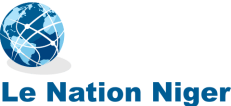Now is the time to invest in Niger
The country will register the strongest growth in Africa this year
Driven by strategic projects and supported by good economic governance, Niger’s economic growth will reach 6.9% in 2022. This is almost twice as much as the rest of the continent (3.8%), specifies the report on the IMF’s World Economic Outlook , published on April 19 . The Sahelian country thus proves its capacity for resilience in the face of the multifaceted crises that affect it.
Niger was already recording GDP growth of 5.9% in 2019, before resisting 3.6% at the height of the Covid 19 pandemic, in 2020, then falling to 1.3% the following year. , against a backdrop of rising world food prices, but also insecurity and climatic shocks. The risk of inflation, largely imported (3.8% in 2021), is still there. At the national level, the deficit of the agro-pastoral season also contributed to inflationary pressures, but these were mitigated by the government’s actions to support the consumption of vulnerable households.
Oil and energy: double-digit growth in the medium term
The good results expected this year, Niger owes them in particular to strategic projects. The pipeline under construction to Benin should boost its oil production capacity by 2024 and lead to double-digit economic growth in the medium term, which is expected to reach 7.2% in 2023.
The Sahelian country plans to increase its oil production to 110,000 barrels per day from next year, thanks to this pipeline, then to 200,000 b/d by 2025, against 20,000 b/d currently. The oil industry would thus contribute 25% of GDP, 50% of government revenue and 80% of exports.
At the same time, Niger is stepping up its investments in green energies. Its objectives: to make the country a regional hub for the export of electrical energy and to increase renewable energies in its energy mix to 30% by 2030.
“Make Niger a regional hub for the export of electrical energy”
Services are already driving growth
In 2021, growth was driven by the secondary (6.7%) and tertiary (6%) sectors. In addition to extractive industries, efforts in construction, manufacturing, water and electricity production have contributed to the growth of the secondary sector. As for the tertiary sector, its growth is mainly linked to the good health of transport, communication, public administration as well as hotels and restaurants.
Economic governance at the height
These investments are supported by effective governance. The budget deficit remained stable at 5.3% of GDP in 2021. The debt burden (47.8% of GDP) remains moderate, due in particular to the prudent policy favoring concessional borrowing. The mobilization of internal resources increased by 5.3% in 2021 and the mobilization of external resources, loans and grants, notably benefited the water supply and transport infrastructure sectors.
In this context, FDI increased by 86.9% in 2021, rising in nominal value from 206.7 to 386.5 billion FCFA. As for bank financing, loans granted to the economy increased by 15.4% in nominal variation, driven by services and processing.
Source: Presidency of the Republic of Niger
